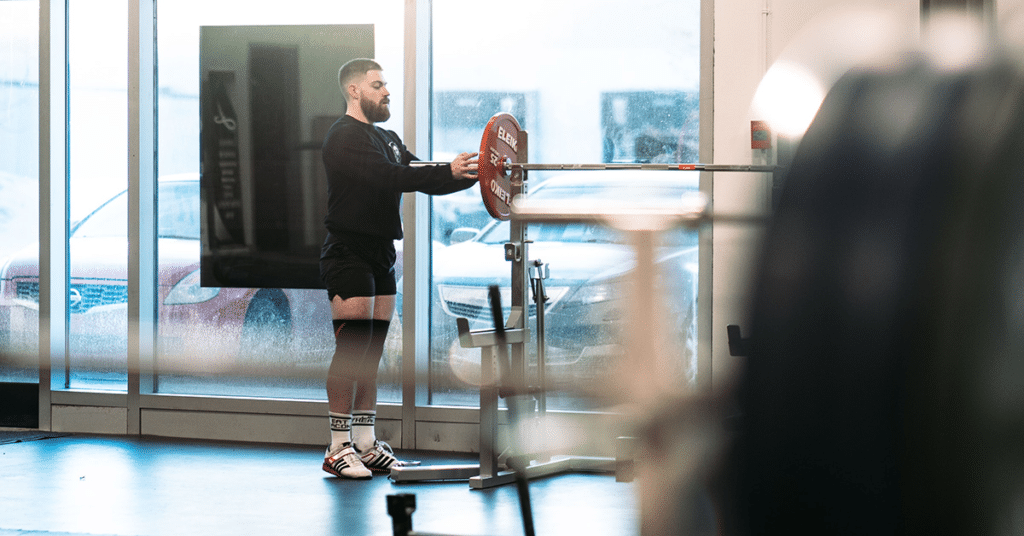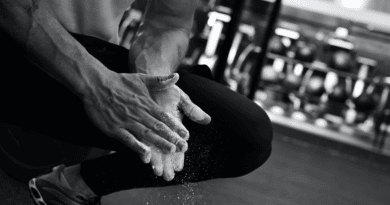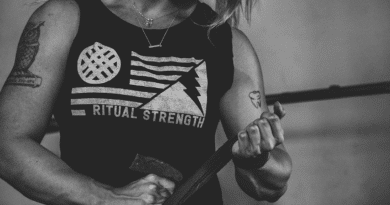Close Grip Bench Press Best Guide: Benefits, Muscles Worked and Technique
This complete guide will teach you everything you need to know about the Close Grip Bench Press.
What is the Close Grip Bench Press?
The close grip bench press is a compound barbell exercise that works the chest, triceps and shoulders.
The close grip bench press also builds significant muscle and strength in the upper body.
- What is the Close Grip Bench Press?
- What Muscles Does the Close Grip Bench Press Work?
- What are the Benefits of the Close Grip Bench Press?
- Close Grip Bench Press Technique
- Close Grip Bench Press Common Mistakes
- Close Grip Bench Press Variations
- Close Grip Bench Press Alternatives
- Close Grip Bench Press Sets and Reps
- How Close Together Should My Hands be for the Close Grip Bench Press?
- What is the Best Close Grip Bench Press Grip to Use?
- How to Set Up Your Feet for the Close Grip Bench Press
- How to Lock Out the Close Grip Bench Press
- How Much Should I Arch my Back During the Close Grip Bench Press?
- How to Unrack the Close Grip without a Spotter
- How to Breathe During the Close Grip Bench Press
- Best Safety Tips for the Close Grip
- How Do you Make the Close Grip Easier?
- How Do you Make the Close Grip Harder?
- Who Should Do the Close Grip?
- Is Close Grip Suitable for Beginners?
- Can you Build Muscle with the Close Grip Barbell Bench Press?
- Can you Build Strength with the Close Grip Barbell Bench Press?
- Conclusion
- Learn More
What Muscles Does the Close Grip Bench Press Work?
The close grip bench press works your triceps, chest, core, shoulders and forearms in addition to providing an intense workout for the entire upper body.
The close grip bench press targets several different muscle groups at once:
Triceps
Your triceps are located on the back of your arm. They’re the muscles that extend (straighten) your elbow, and they also straighten your arm when it’s in front of you. The triceps are large muscles, requiring a lot of energy to use them because they produce high forces over short periods of time with little rest between movements.
Pectorals
The pectorals are a large muscle group, located on the front of your chest. They have several functions, including:
- Abduction: moving an arm out to the side away from your body
- Adduction: moving an arm across your body toward your chest
- Medial rotation: rotating the arm inward toward the midline of your body
Core Muscles
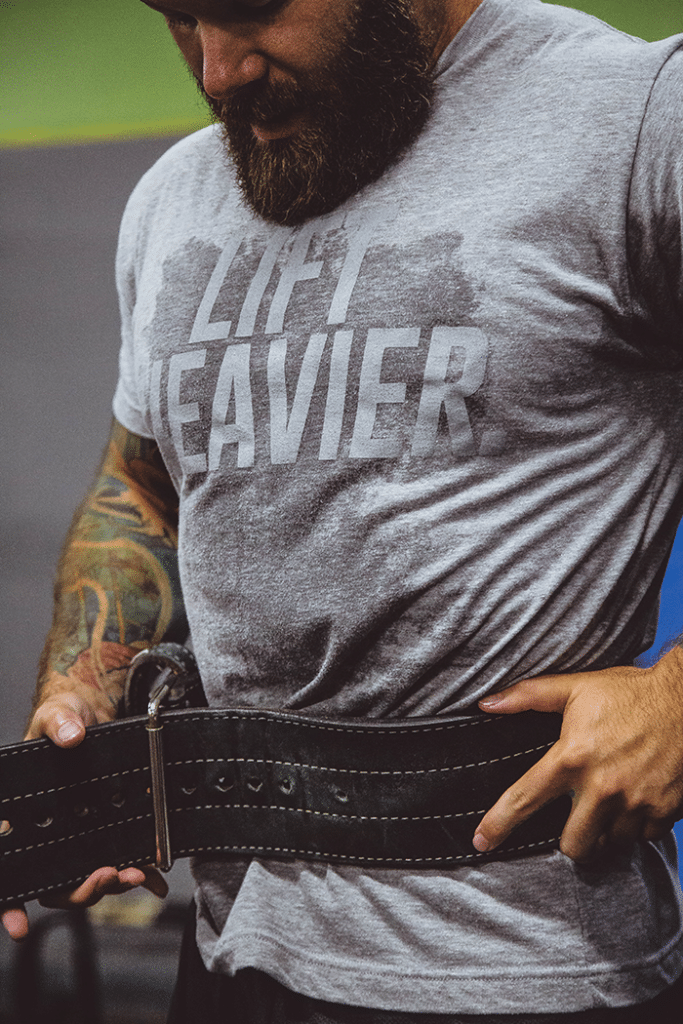
The core muscles are the muscles that surround your spine and pelvis. These include:
- The abdominal muscles (rectus abdominis, transverse abdominis and obliques)
- The lower back muscles (erector spinae and quadratus lumborum)
- The hip flexors (iliacus, iliopsoas and psoas major)
Forearm Muscles
Forearms are a very important part of the body. They’re used for gripping and pushing, pulling, stabilizing and balancing the body. Forearms provide power for athletes as well as everyday activities such as lifting heavy objects or getting out of bed in the morning.
Deltoids
The deltoid is a muscle in the shoulder, and it’s an external rotator of the shoulder joint. The deltoid functions as a powerful muscle that makes up much of your upper arm. The deltoid covers most of your shoulder joint, and it has three parts: anterior (front), lateral (side), and posterior (back).
The anterior part is triangular-shaped with its base attached to your collarbone on either side of your neck; its apex goes toward your outer upper arm bone; and its margins form the largest point of attachment for all three heads (anterior, lateral, posterior). It works with other muscles to lift objects or move them away from your body.
Supraspinatus
It is a small muscle that is located in the back of the shoulder and helps to rotate your arm outwards. It is considered one of the rotator cuff muscles, which work togethear to help you lift and rotate your arm.
The supraspinatus is one of four muscles that make up the rotator cuff, along with infraspinatus, teres minor and subscapularis. These four muscles enable you to bend your elbow and perform many tasks such as reaching above your head or throwing a ball.
The supraspinatus muscle helps you rotate your arm outward toward your side (abduction). It also supports it while performing other movements such as lifting heavy objects or playing sports like tennis or golf where both arms must be active at once
Infraspinatus
The infraspinatus is a small muscle at the top of your shoulder joint. It’s part of your rotator cuff, which is a group of four muscles and tendons that keep your arm steady as you move it around. When you rotate or lift heavy objects with your arm bent, this muscle helps stabilize the joint so it doesn’t move too much and cause injury.
Infraspinatus is Latin for “below spine,” which describes its location on the side of your body just below where your spine ends at the neck.
The infraspinatus has long fibres that run down to connect with long tendons (tough bands) that attach to bones in both arms: one connects it to an upper arm bone called humerus while another connects it to a lower arm bone called ulna.
Teres Minor
The teres minor is located in the upper arm. It works with the subscapularis to rotate the upper arm inward, and it is part of the rotator cuff. The teres minor helps with abduction of the arm, or moving your upper arm away from your body.
Subscapularis
The subscapularis is a triangular muscle that lies beneath the shoulder blade. It originates from the lesser tubercle of the scapula, with its apex pointing toward the spine and its base attaching to the crest of this bone.
Learn more about German Volume Training
It acts to stabilize and rotate your shoulder joint during abduction (i.e., when you lift your arm away from your body). A common injury caused by this muscle is referred pain in the front of your shoulder. If you’re trying to strengthen it, remember: Go easy! Too much weight can cause serious damage.
What are the Benefits of the Close Grip Bench Press?
The close grip is a variation of the standard barbell bench press. It targets the pectorals, deltoids and triceps muscles, as well as the upper back.
This exercise can help you build strength in those areas and increase your overall upper body muscle mass size.
It also trains your body for other exercises like military presses and dips. It’s a great way to enhance these movements since it replicates their mechanics in a slightly different way while applying resistance through an alternative range of motion (ROM).
The close grip can be used by bodybuilders who want to add mass or powerlifters who want to increase their total without compromising form or technique.
It is great for everyone else that wants to get a stronger upper body and build muscle.
Close Grip Bench Press Technique
The close grip is a great way to build up your strength and power. This exercise will help you build massive chest muscles and increase endurance in the upper body.
Keep these tips in mind when doing this exercise:
- Keep your elbows tucked in.
- Keep your back straight.
- Keep your shoulder blades together.
- Keep your head in line with your back; don’t let it lurch forward or backward too much as you are lifting. This could cause injury to the neck area of the body if done incorrectly!
- Chest up, shoulder blades squeezed together at all times during movements where weight is being lifted
- Brace your core, glutes and grip at all times.
Close Grip Bench Press Common Mistakes
Are you making any of these erros?
Bouncing the Weights
The close grip requires a lot of strength, but it also requires a lot of technique.
When performing the close-grip bench press, you should not use momentum to help you lift the bar off of your chest.
Don’t bounce the weight off your chest. A short pause can be a great way to avoid this bad habit.
The pause makes the lift much harder, and therefore it will make you much stronger.
Not Using the Full Range of Motion
Always move the weight through the full range of motion unless you have a specific and justifiable reason to be training with partial reps.
Using too Much Weight
You should build up your strength gradually with this exercise.
If the weight is too heavy, lifters often unconsciously start to wider their grip in order to complete each rep. This makes the exercise pointless because the movement becomes a light barbell bench press for the chest, rather than a challenging close grip movement for the triceps.
Descending Too Quickly
Don’t let the weight crash back down onto your body. Explode the weight upwards and control the descent.
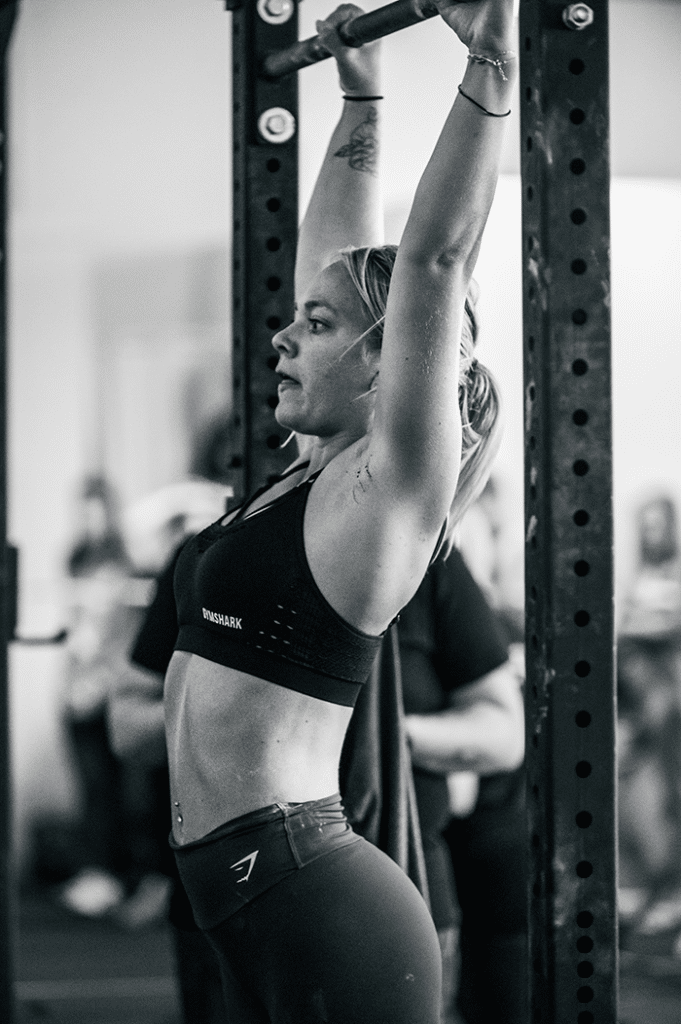
If hypertrophy is your goal, take up to 3 seconds for the descent in order to maximise the time under tension.
Close Grip Bench Press Variations
Try adding the following variations into your training for some new stimuli.
- Close grip with chains
- Close grip with bands
- Close grip with a barbell
- Close grip with a dumbbell
- Close grip with a barbell and chains
- Close grip with a barbell and bands
- Svend press
Close Grip Bench Press Alternatives
If you want alternatives to the close grip presses, there are a few alternatives you can try:
- Close Grip Barbell Rows – This exercise will help strengthen your back muscles, as well as your biceps.
- Close Grip Pull Ups – This is an excellent exercise for working out the back and shoulders. It’s also great for building arm strength and upper body endurance.
- Close Grip Cable Rows – These will work a lot of different muscles in your upper body at once—your lats, triceps, forearms—so they’re an excellent choice if you’re looking for a complete workout.
Close Grip Bench Press Sets and Reps
Building Muscle
Go for 3 – 5 sets of 8 – 12 reps. Rest for 30 – 45 seconds between sets.
Building Strength
Aim for 3 – 5 sets of 3 – 6 reps. Use heavy weights and rest for 2 minutes or longer between sets.
How Close Together Should My Hands be for the Close Grip Bench Press?
The general rule is to place your hands under the bar so that they are shoulder-width apart.
Remember to tuck your elbows in close to your body at all times.
What is the Best Close Grip Bench Press Grip to Use?
It is possible to use an overhand (pronated), thumbless or underhand (supinated) grip in this type of press.
However, the thumbless grip is not recommended as it is not as safe as the full grip regular variation.
How to Set Up Your Feet for the Close Grip Bench Press
The first step to setting up your feet is to make sure they’re shoulder-width apart.
Your knees should be bent at 90 degrees and your feet should be flat on the floor. This helps you maintain a stable base for balance as you lift, as well as generate some serious power.
How to Lock Out the Close Grip Bench Press
There are many tips to help you lock out the close grip lift.
Use Your Legs
First, you can use your legs to push the bar up.
This method is tough because you need a lot of leg strength and coordination, but it’s effective for improving the overall power output from your body.
A good coaching cue is to imagine you are pushing the floor away from you.
Improve your Tricep Strength
The floor press, jerk, push press and dips are all great exercises to help you strengthen your triceps, as is the close grip press itself.
How Much Should I Arch my Back During the Close Grip Bench Press?
With this particular movement, I would say that somewhere between 20 and 30 degrees is acceptable.
Any more than that and it can lead to injury if you are new to weightlifting. Any less than this will also put unnecessary stress on your spine (especially if you have an existing back issue).
In general, with any strength training exercise you should be able to maintain a neutral spine position throughout all parts of the movement with no pain or discomfort whatsoever.
How to Unrack the Close Grip without a Spotter
If you don’t have a spotter, it’s important that you know how to unrack the close grip safely.
This will ensure that you don’t injure yourself or others while working out.
The best way to do this is by using a power rack, squat rack, or bench press with safety bars:
How to Breathe During the Close Grip Bench Press
When you are performing the exercise, inhale and brace your body before you lift.
Exhale when you finish the rep.
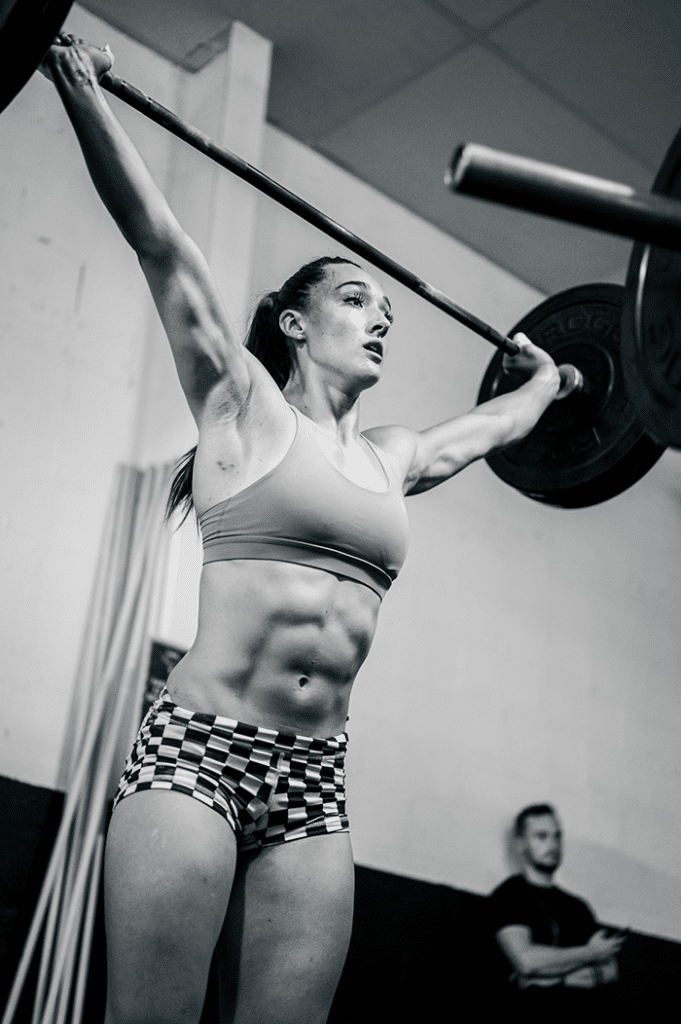
Best Safety Tips for the Close Grip
- Use a spotter
- Don’t do the close grip if you have shoulder problems
- Don’t do the close grip if you have elbow problems
- Don’t do the close grip if you have wrist problems
- Build up the weight gradually
How Do you Make the Close Grip Easier?
If you’re struggling with the close grip movement, here are some ways to make it easier:
Use a Lighter Weight
While this isn’t necessarily the best option for improving your strength, it can help lessen the stress on your shoulders if they’re giving out during the lift.
If your shoulders are feeling fine but other muscles are fatiguing too quickly, try using a lighter weight until your body gets used to handling heavier loads.
Change your Grip Width
A wider grip will reduce range of motion and decrease difficulty when compared with using a closer grip. However, make sure that you are still withing the “narrow grip” spectrum and don’t let the exercise turn into a regular bench press.
How Do you Make the Close Grip Harder?
There are a number of ways to make the close grip exercise harder.
Try a Different Barbell
One option is to switch from using an Olympic barbell to a fat bar, monkey bar or EZ-curl bar—also known as a “cambered” bar.
This will challenge your body in new ways.
Use More Weight
Simple and effective.
Do Pause Reps
Pause the bar on your chest for two seconds. This will significantly increase the difficulty of the exercise.
Who Should Do the Close Grip?
Close grip is a great exercise for building strength and muscle and is suitable for all lifters.
Is Close Grip Suitable for Beginners?
For beginners, we recommend that you get at least comfortable with the regular bench press first.
The close grip is a great way to build strength, muscle and power. It can also help you develop endurance as you train your muscles harder in the closed position. This will increase their ability to contract forcefully over time.
Can you Build Muscle with the Close Grip Barbell Bench Press?
Yes, you can build muscle with the close grip bench press.
The amount of weight you can lift is a good indicator of strength; however, it doesn’t necessarily mean that you will have increased muscle size (hypertrophy). To increase both strength and size, you need to progressively overload your muscles by increasing either weights or repetitions over time.
You can increase the amount of weight being lifted by focusing on your form and technique during each rep.
Drop sets, tempo lifts and pyramid sets are also useful tools for building muscle.
Can you Build Strength with the Close Grip Barbell Bench Press?
Yes, you can build strength with the close grip. How much strength you build depends on how much weight you lift and how many repetitions you perform.
Lower volume sets with heavy weights and longer rest periods are a good formula to start with.
Conclusion
Even if you’ve never done close grip before, you can see that there are many benefits to adding this exercise into your training routine.
You can use it to increase your compound strength on other lifts like the bench press, for example, or to improve muscular hypertrophy in the chest and triceps.
Additionally, it is suitable for any level of lifter, from beginner through to expert.
The only equipment required is a barbell, bench and weights.
In fact, we recommend every lifter includes at least one compound variation on their push day workout because it will help them progress faster overall in terms of strength, muscle mass gains and improved performance for many other exercises and sports performance in general.

